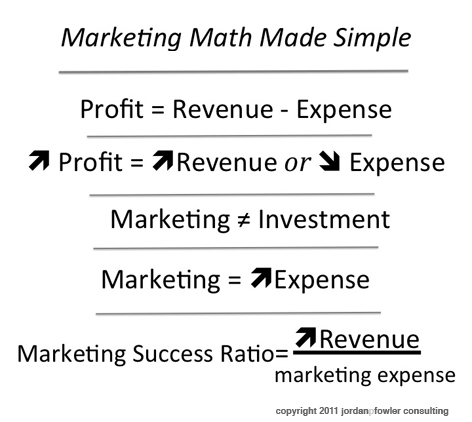A recent article I wrote for Miller Public Relations on how to nurture those hard earned leads. Assign each a bucket and treat accordingly. Here’s how….
Category: A “where do I put this?”
Poor Kazahkstan. Another Public Relations Blunder.
At a recent medal ceremony, the host country, Kuwait, played the national anthem of Kazakhstan. Except, oops, it wasn’t the true national anthem it was one done by actor Sasha Cohen as his character Borat.
Here is the real Kazakhstan National Anthem
The Borat anthem was accidentally played by organizers at a medal ceremony at the Arab Shooting Championships. Gold medalist Maria Dmitrienko stood on the podium looking bemused at the mix-up, which was described as a “scandal” by Kazakh Foreign Ministry spokesman Ilyas Omarov.
The false anthem – which extols Kazakhstan’s potassium and prostitutes and memorably contains the line “Kazakhstan – greatest country in the world, all other countries are run by little girls” – was played in the 2006 movie Borat: Cultural Learnings of America for Make Benefit Glorious Nation of Kazakhstan.
Quote from The Atlantic.
Former Soviet Kazakhstan is Central Asia’s largest economy and hopes to become one of the world’s top energy exporters by 2020.
Why the Different Headlines?
Ten sources chose very different headlines in response to a recent medical study. Which headline you read could, in this case, be a matter of life or death. Read the article I authored at Miller Public Relations.
Writing your headlines matters. Get it concise, accurate and yes, attention grabbing.
How Are People’s Brains Experiencing Your Brand?
Is your brand dopamine friendly? Read my recent article for Miller Public Relations and find out.
Marketing Math–Are You Using It?
(or How To Stop Believing Marketing Gibberish)
Use this Marketing Math Made Simple chart to improve your marketing efforts by bringing them into the real, harsh world of P&L, expenses, and cashflow. The mere mention of these terms gives marketers the willies, yet this is what keeps business owners up at night.
Here is Marketing Math Made Simple:
Profits, Revenue and Expenses
The goal of business is to make a difference in the world while earning maximum profit. I know some forgo the “make a difference world” piece; they shouldn’t. The only way to increase profit is 1) increase revenue or 2) decrease expenses.
Marketing is not an investment.
While many marketers will use the term return on investment when referring to marketing, in its truest sense, this is incorrect. In an investment, you place principal into things–stocks, businesses, oil wells–that return dividends on the leverage of your principal. At the end of the investment, you earn back your principal plus dividends (unless it all went south, of course). The object invested in can be sold if necessary to get a return of principal–house, oil well, stocks. This is not how marketing works.
Marketing is an expense.
When you buy a print ad, radio spot, or Facebook ad, your “principal” is forever gone. You cannot resale the ad or spot. Good business owners realize marketing is a necessary expense of doing business–like a computer, or staff, or stationery. It is tempting for marketing people to try to sell their services as an investment. “Would you like to invest in your business?” sounds like a much better selling point than, “Would you like to incur some new expenses?”But better-pitch-point does not equal true.
Some expenses are good expenses.
Buying new computers when your old ones won’t compute the task at hand without smoking, sputtering and wasting time, good expense. Spending money on new staff when your current staff is overloaded and you’ve tried less expensive efficiency tools (project management software, shock collars, etc.), good expense. Staying in a five-star hotel on business trips, bad expense. Good expenses open up the funnel of potential business growth and reduce the bottleneck of inefficiency. Bad expenses are silly.
Profit is the true measure.
The crux of Marketing Math Made Simple is that profit should increase at a greater rate than the associated marketing expenses. Granted it will take time for marketing to have affect. Some marketers and business owners will allow marketing expenses to accumulate ad infinitum without ever seeing a increase in profit. If so, marketing becomes a bad expense.
How We Use Marketing Math in Our Approach at Jordan P. Fowler Consulting
If you spend any time around us, you will quickly pick up on our evidenced based business development and marketing approach. While we may use the terms “brand awareness,” “increased followers” and other marketing speak, we realize they are never the end game.
The only measure of successful marketing is INCREASED PROFITS resulting from a growth of revenue that outpaces marketing expenses incurred.
1. We conduct a BeFogFree exercise.
This provide incredible clarity of your unique core values and make key business model adjustments before amplifying your core uniqueness through marketing. (Read more on BeFogFree).
2. We establish a clear “You are Here” profit metric.
We determine your present metric of profit, revenue, and expenses. If this is not known, progress cannot be measured.
3. We conduct an efficiency study to reduce expenses and eliminate headaches.
We assess your current business systems and processes, making efficiency recommendations to reduce operating expenses and ready you for increased growth as a result of your marketing. This helps eliminates those nagging business headaches.
4.We set marketing budgets together.
We sit down with you to determine what market expenses you can incur that make good sense based upon our marketing research (consumer, competitor, etc.) allowing us to finance the best marketing strategies possible.
5. We share your comprehensive strategic report.
The results of 1-5 are presented to you in our Comprehensive Strategic Report including our BeFogFree findings, Headache Eliminators, and Value Amplifying marketing strategy. At this time we set an official date for a formal progress review to see if your Marketing Success Ratio has increased and by what degree. Rest assured that we are monitoring this throughout the process
6. We execute the marketing strategies, amplifying your value.
Upon your approval we create the need marketing products (ads, website, social media sites, etc) measuring and tracking results in partnership with you and your staff. We take your unique, distinct value and crank it to 11 for the world to hear.
7. We do our formal review.
This is where the evidence that your marketing is working becomes empirically clear . We analyze your initial Marketing Success Ratio versus current Marketing Success Ratio versus our goal for improvement in the ratio.
a. If the desired improvement in the ratio is not achieved, we check to see if more leads have been generated. If they have, we work with you to close the breakdown gap on your end with customer service staff training, additional operations analysis, etc.
b. If you haven’t received more leads, we can adjust or marketing strategies or we invite you to fire us! Not many marketing agencies will give you that invitation–we do.
8. We repeat steps 3-7.
We invite you to call us at 817-889-1487 to set up a free consultation to see how our proven business development and marketing process can increase your profits and provide you more peace of mind and sanity.
Why Marketing Folks Are Often Discounted as Flakes
Read this article via fournaisegroup.com in which 73% of CEO’s think their marketing people are a bit flaky. As someone who bridges the marketing and business development gap, I concur to a large degree, preferring an evidenced outcome based assessment model versus a brand awareness model of measurement on the expense of advertising. Here are a few of their findings:
The top issues CEOs have with their Marketers are:
(1) They keep on talking about brand, brand values, brand equity and other similar parameters that their top management has great difficulties linking back to results that really matter: revenue, sales, EBIT or even market valuation (77%)
(2) They focus too much on the latest marketing trends such as social media, because they believe they represent the new marketing frontiers – but can rarely demonstrate how these trends will help them generate more business for the company (74%)
(3) When asked to increase their Marketing ROI, they tend to understand it as cost cutting through better economies of scale or negotiations with their third-party partners and agencies, instead of top-line growth generation: more revenue, more sales, more prospects, more buyers (73%)
(4) They are always asking for more money, but can rarely explain how much incremental business this money will generate (72%)
(5) They bombard their stakeholders with marketing data that hardly relate to or mean anything for the company’s P&L (70%)
(6) Unlike CFOs and Sales Forces, they don’t think enough like businesspeople: they focus too much on the creative, “arty” and “fluffy” side of marketing and not enough on its business science, and rely too much on their ad agencies to come up with the next big idea (67%)
The worrying part: while 73% of CEOs think Marketers lack business credibility and are not effectiveness-focused enough to generate incremental customer demand, 69% of the Marketers Fournaise talked to feel their strategies and campaigns do make an impact on the company’s business, even though they can’t precisely quantify or prove it – confirming the great CEO-Marketers disconnect.
We prefer a the CEO’s measurements and demand for outcome based results but believe in using as much creativity as possible to achieve those results. Profits are the 0x and creativity is the cart (or horse and carriage if you roll that way). The fact that the company has profits allows marketers to use a portion of those profits to fund their creativity. Oftentimes, marketers think of this in reverse order. It can become tempting to think that a product or service exists because we market it. In actuality, we can market because their is a product or service that exists to be promoted. Thus, marketers should speak and measure in these terms as well as traditional marketing terminology:
1) Profits and sale. Profits are to be the first line of evaluation at all times (or outcomes for nonprofits). Always track company profits versus marketing efforts. Even if direct causation cannot be tracked, strong correlation should be seen.
2) Qualified leads increased and delivered to sales force. If you are not finding out the media in which captured the people calling sales, you are failing in a huge part of your marketing responsibilities.
3) Forward moving conversions (example, increase of x% of number of Facebook friends who made purchases).
4) Referrals generated resulting in new qualified leads. Are any marketing efforts resulting in making our existing customers more prone to refer.
5) Specific revenue generation vs. expense from specific mediums, even better specific campaigns and ads
6) Hard metric profit/sales increase goals. You need to be judged and critiqued like every other operating sector within the business. Theses should be specific, bound in time and number and outcome rather than output based.
Second to this are things like consumer brand awareness, social media follower counts, page visits. Three hundred new Facebook friends who never convert to purchasers do little good in convincing your CEO that their marketing expenses are valid expenses.
So marketers, learn business-ese and you’ll find your CXO’s will view your department as less flaky and be willing to increase your budgets.
The Purina Diet — How to do a Misuse Ad
A funny status update (fictitious?) circulating on Facebook.
I was at Walmart, buying a bag of Purina dog chow for my dog, in the check-out line when a woman behind me asked if I had a dog. Why else would I be buying dog chow, RIGHT??? So on impulse, I told her that I didn’t have a dog, but I was starting the Purina Diet again & that I probably shouldn’t because I ended up in the hospital last time, but that I’d lost 50 pounds before I awakened in intensive…… care, with tubes coming out of most of my orifices and IVs in both arms. I told her that it was essentially a Perfect Diet and all you do is load your pockets with Purina Nuggets and simply eat one or two every time you feel hungry. The food is nutritionally complete so it works well and I was going to try it again. (I have to mention here that practically everyone in line was now enthralled with my story.) Horrified, she asked if I ended up in intensive care because the dog food poisoned me. I told her no, I stepped off a curb to sniff a poodle’s butt and a car hit me. I thought the guy behind her was going to have a heart attack he was laughing so hard. Better watch what you ask me and be prepared for my answer. I have all the time in the world to think of crazy things to say!
Purina should do an adaptation of this story as an ad. Many brands could occasionally use a humorous misuse ad, as doing this actually reminds people of what their product is truly about by comparing it to a ridiculous usage.
What is a funny misuse of a service or product your business provides that could, in reality, remind people of your service or products true benefits?
How You Can Hang Out With Your Favorite Player During the Game — Inclusive Marketing
 Okay, technically not you. A photograph of you embedded in the number on their jersey, in this case, soccer jersey (Yahoo story). For around $25 you get your face embedded in your favorite players number on gameday. (Before you start calling all friends to watch to the game to see you, keep in mind that your face will be a whopping 2 cm x 2 cm). This new trend shows just how far people will go to be connected to their favorite sports brand. By their mug being placed on their favorite player’s shirt, they somehow gain a feeling of inclusion. Albeit, they avoid the agony of being cleated in a brutal, intentional red card take-down.
Okay, technically not you. A photograph of you embedded in the number on their jersey, in this case, soccer jersey (Yahoo story). For around $25 you get your face embedded in your favorite players number on gameday. (Before you start calling all friends to watch to the game to see you, keep in mind that your face will be a whopping 2 cm x 2 cm). This new trend shows just how far people will go to be connected to their favorite sports brand. By their mug being placed on their favorite player’s shirt, they somehow gain a feeling of inclusion. Albeit, they avoid the agony of being cleated in a brutal, intentional red card take-down.
This poses an interesting question. How can your brand further harness its patrons’ desire to be included in a personal capacity? From the like button on Facebook, to more novel approaches, is there a way for your fans to place their personal imprint within your brand?
This seems to be a perpetual desire, as donors pay big bucks to universities to get their name emblazoned on a small brick on the walkway to the shrine (football stadium) of their alma mater. There is something about our name or likeness being connected in some physical way to a brand we adore. I know that if Liverpool ever offers this, I’m on both Suarez and Reina’s kits. Be creative and think how you can create this positive connection for your brand fans.
How Often You Should Post to Twitter or Facebook
You might wonder how frequently you should post to Facebook or Twitter.
Wait at least one hour before posting a second post with a link on Facebook or Twitter. Current data reveals more frequent posting actually divides click thru’s.
The most followed people on FB and Twitter post once every 1.5 days.
Drawn from Dan Zarrella‘s new book, which I highly recommend, Hierarchy of Contagiousness.
Avoiding a Zombie Apocalypse
The Center for Disease Control, unlike many large organizations, has a sense of humor. If you are concerned about a zombie apocalypse here is the official U.S. federal government response.

Also, diverse responses on zombie protection on Quora.
I would add what I saw on the Shiloh Church marquee sign. No joke, they are always bizarre.
“Zombies don’t eat fast food.” (An upcoming series on this).
Both the CDC and Shiloh have realized the power of a disconnected message method as has Geico. Obviously, this works very well through social media platforms. While it shouldn’t be core to your efforts, showing a sense of humor or even mild shock can be effective to drawing initial attention to your offerings. Of course, it can backfire. Many of us have seen a commercial where we saw a humorous, disconnected message and, afterwards, if asked we could not tell you the product or service promoted.
